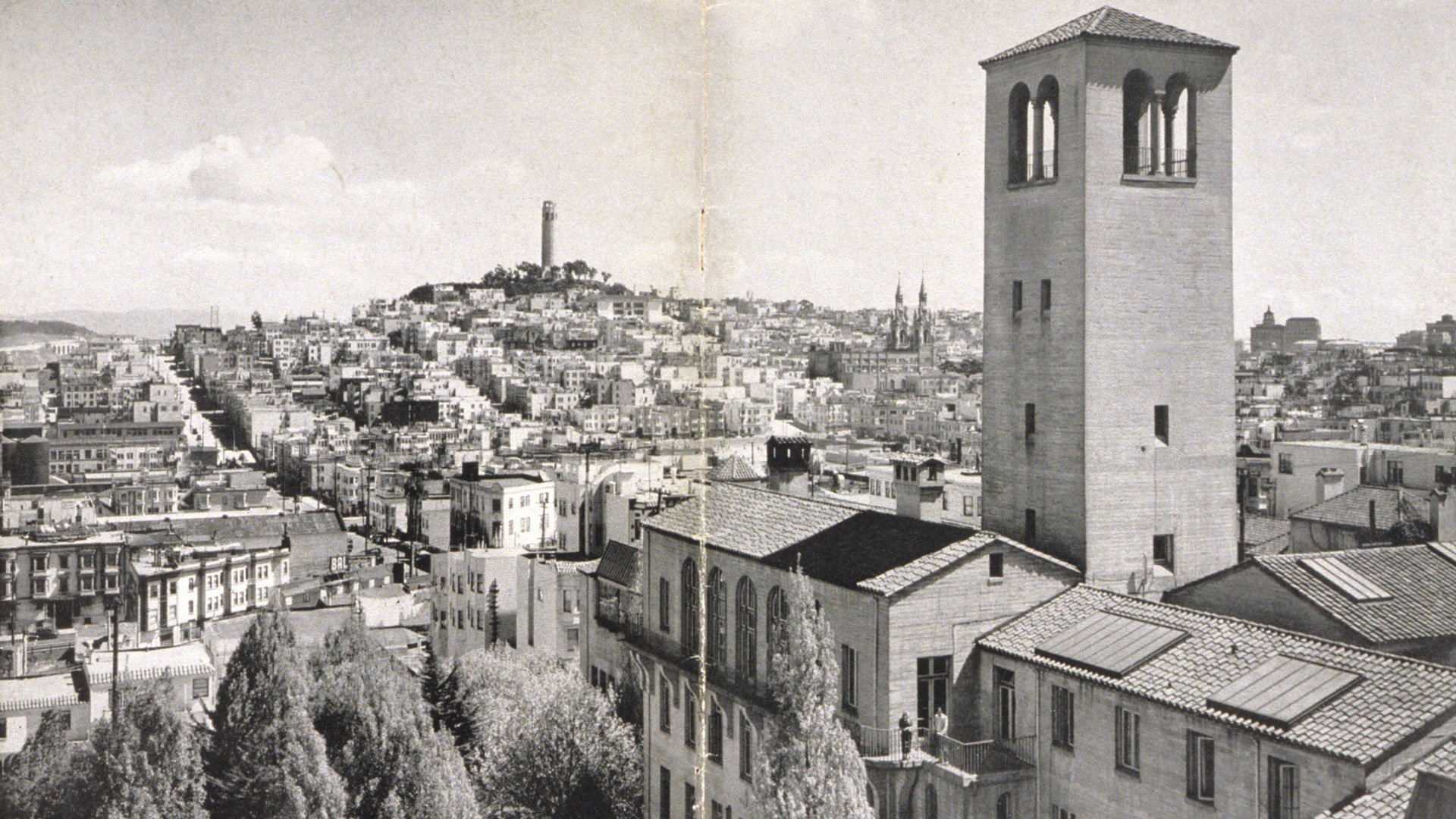The Closing of SFAI…
Original Campus photo taken by artist photographer Ansel Adams
It’s crazy to think about how fragile legacies can be. One minute they’re alive and well and the next they find themselves on the brink of obsoletion. Unfortunately, this fade to black is exactly what the San Francisco Art Institute is faced with. SFAI marked its last commencement of students on July 12, 2022. Since its layoffs, foreclosure proceedings, and perceived closure in March 2020, SFAI has educated and graduated 175 students while struggling for financial stability. After many years of austerity measures, embezzlement scandals, poor leadership, challenging fundraising campaigns, and various on and off merger and acquisition negotiations, SFAI is no longer financially viable and has ceased its degree programs as of July 15, 2022. SFAI will remain a nonprofit organization to protect its name, archives, and legacy.
As of July 16, 2022, no students or employees will fill SFAI’s historic landmark campus, a beautiful and unique spot in San Francisco with its glorious Diego Rivera fresco, exquisite views of the city, and its Italianate–meets–60s-Brutalism architecture. Instead, a few contractors will manage security, regulatory, legal, and financial matters, and ensure that students and alumni can access their academic records.
Photo of the famed Diego Rivera Mural in the Student Gallery
SFAI owns the Diego Rivera fresco in the Chestnut Street campus. The University of California owns the building. SFAI will lose possession of the fresco if it defaults on or loses its lease on the building. SFAI is actively working with local and international donor communities to protect the fresco.
In January 2022, the leadership of SFAI and the University of San Francisco signed a Letter of Intent for a possible acquisition of SFAI’s assets and liabilities. The intention was to create a path forward, protect the well-being of students, faculty, and staff, and provide a fine arts education that would build upon SFAI’s 151-year legacy and pedagogical tradition. However, SFAI recently learned that it would not receive an acquisition offer.
Photo from Studio Hash documenting works by Joshua Hashemzadeh and other artists during a SFAI student exhibition, 2013
To honor its legacy, SFAI is creating a nonprofit foundation to protect its name, storied history, and SFAI’s Archives—a wealth of primary source material about art, culture, and American arts education in the 19th through 21st centuries. Encompassing, birthing, and leading some of the most significant art movements of the last century—including Abstract Expressionism, Bay Area Figuration, Color Field, California Funk, and the Mission School—SFAI and its archives have embodied the spirit of experimentation, risk-taking, and innovation. San Francisco’s reputation for freedom of expression, cultural confluences, and being a hotbed of art is inseparable from the maverick existence of SFAI.
The passing of this venerable institution is a loss for the entire art world, especially for SFAI’s friends, colleagues, and SFAI artists: its students, faculty, staff, and alumni.
Photo taken during my first visit to the SFAI campus in 2013 after accepting a deans scholarship and enrolling in their BFA program for painting
Photographer, alumnus, and Board Chair Lonnie Graham stated, “After years of planning and immeasurable sacrifice by our students, faculty, and staff, it is profoundly lamentable that we are faced now with this present outcome. The Board’s goal was to preserve the legacy of one of the last remaining fine arts-only institutions while advancing the course of innovative educational practices that occurs through reciprocity between the students and faculty.”
The entire Board and administration “encourages community members to stay connected through SF Artists Alumni, an independent global SFAI art community, and is eternally grateful for our hardworking, dedicated, and exceptionally talented students, faculty, staff, and alumni.”
As one of the country's oldest and most prestigious independent art schools, countless influential artists have been drawn to its magnetism and shaped the future of art, culture, and society. For example, in 1880, photographer Eadweard Muybridge screened what is known as the world’s first moving picture at the school and proved that a horse has all four feet off the ground when galloping. After World War II in 1945, faculty member Ansel Adams created one of the world's first fine art photography departments.
Other notable faculty and alumni luminaries include Kathryn Bigelow, Iona Rozeal Brown, Joan Brown, Nao Bustamante, Enrique Chagoya, Dewey Crumpler, Imogen Cunningham, Angela Davis, Richard Diebenkorn, Kota Ezawa, Karen Finley, Howard Fried, Paul Kos, George Kuchar, Tony Labat, Dorothea Lange, Annie Leibovitz, Barry McGee, Manuel Neri, Catherine Opie, José Clemente Orozco, Man Ray, Rigo 23, Mark Rothko, Clyfford Still, Carlos Villa, and Kehinde Wiley, among many others.
Photo of an End-of-year art installation on top of the SFAI student cafeteria, by SFAI alumni Joshua Hashemzadeh, circa 2015
The profound influence of SFAI artists spans the globe. Writer, historian, and activist Rebecca Solnit may have said it best:
“I think that the greatness of the Art Institute can be measured in part, of course, by its alumni who have gone on to make names for themselves. But more than that, the myriad of graduates left with a vision of what it means to lead a creative life: to become producers of meaning rather than consumers of meaning, to be part of a cultural community, and to think for themselves. Understanding how we see the world is cultural, and culture is something we make, change, and make over. Artists play a role in this, affecting justice, truth, rights, nature, law, and all the rest of our lives. . . And it (SFAI) has been magic. May it long continue.”
While SFAI will not continue in its current form, its spirit, embodied in its global alumni community and the new Foundation for its archives, is unbroken and immortal. Or so we hope…







